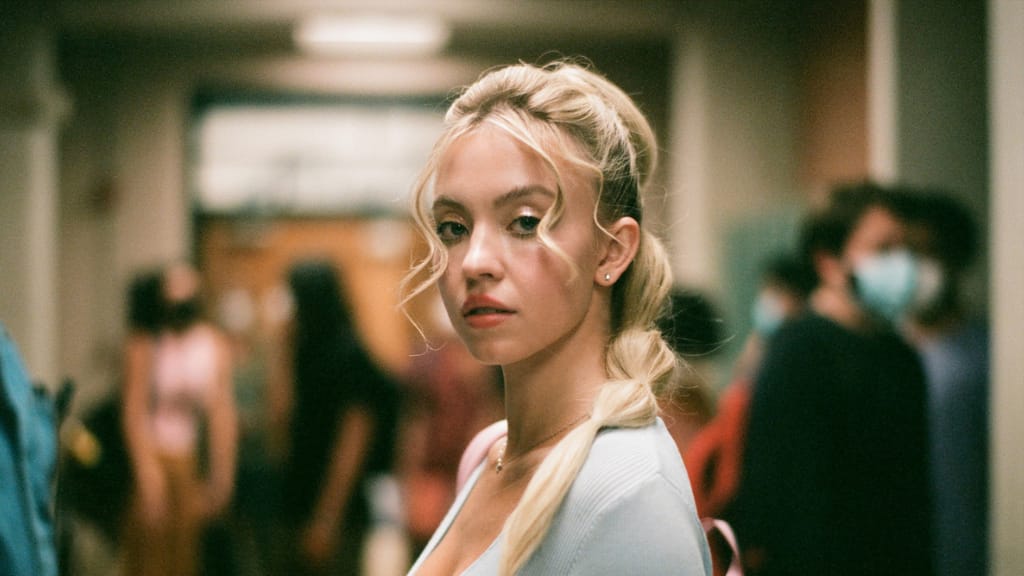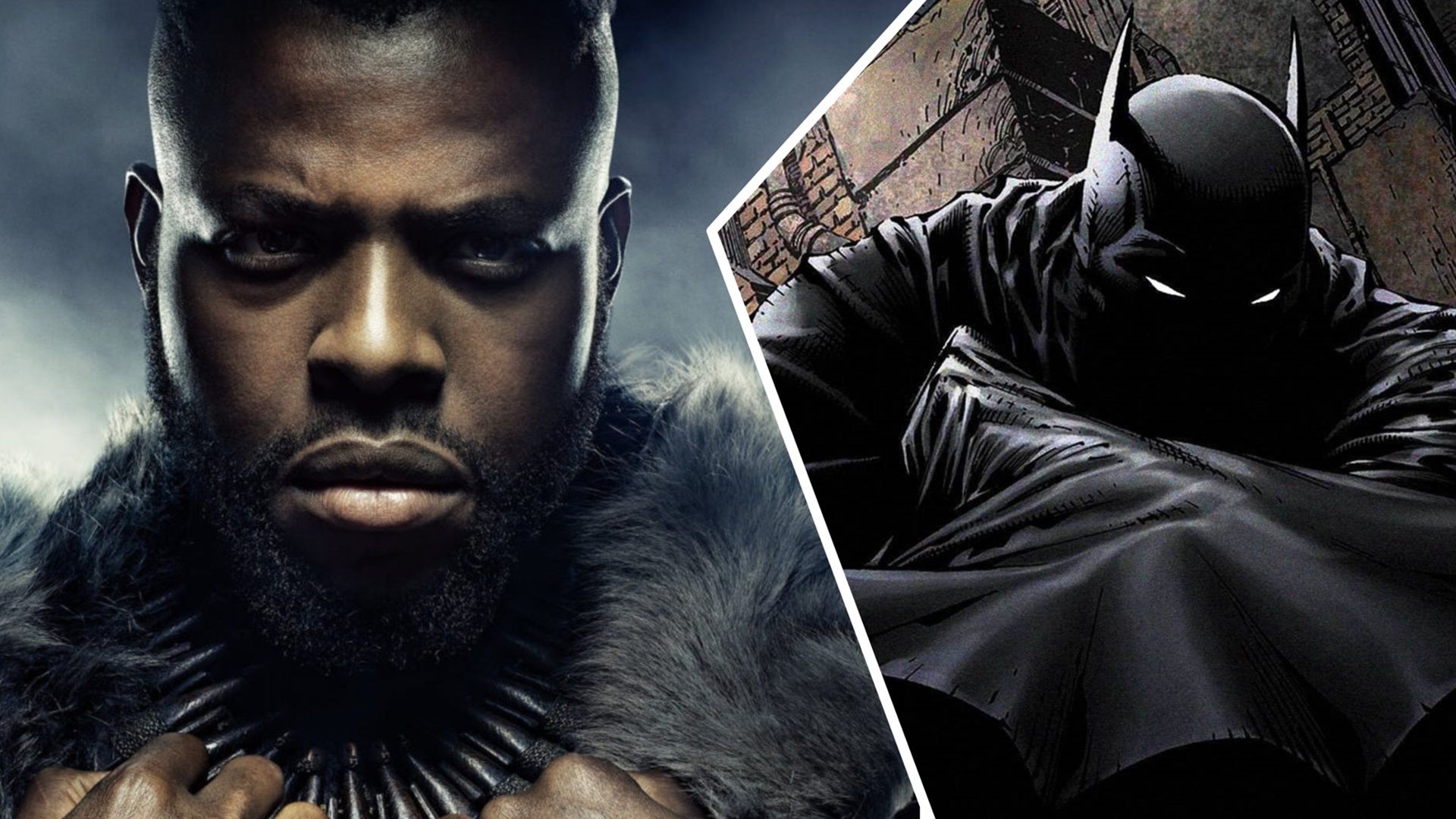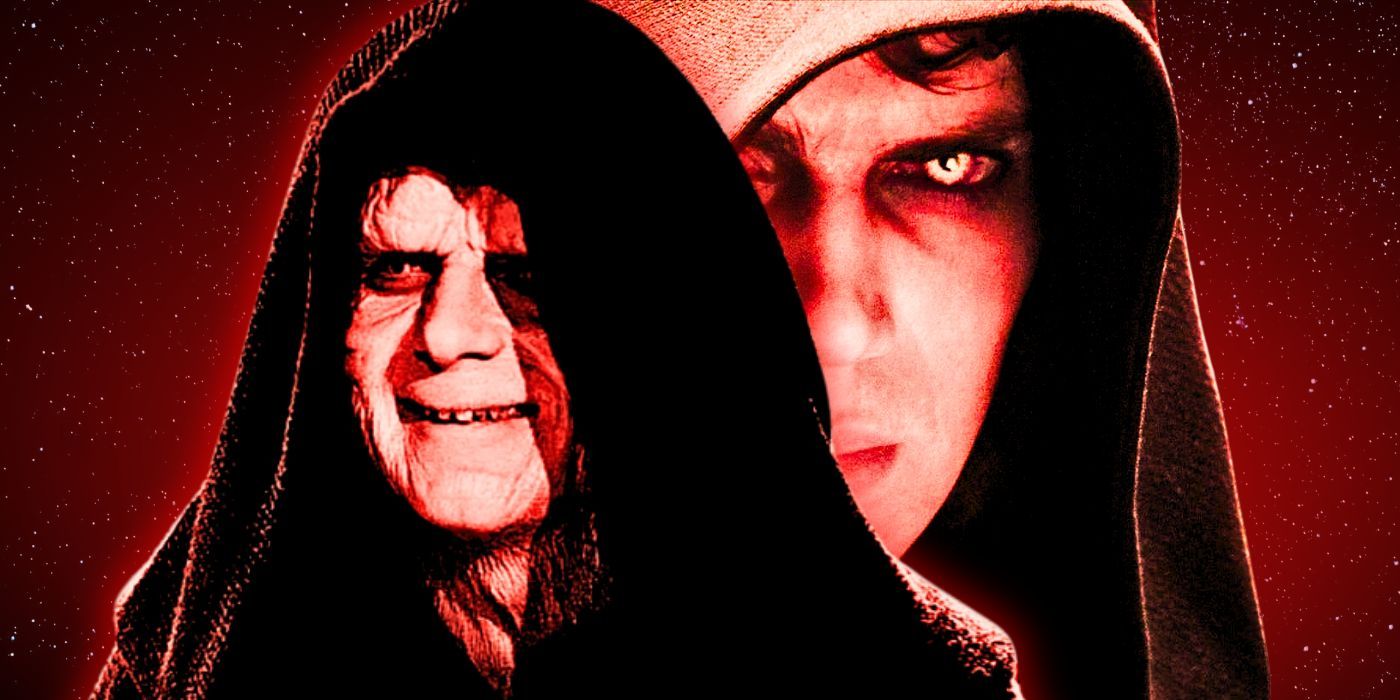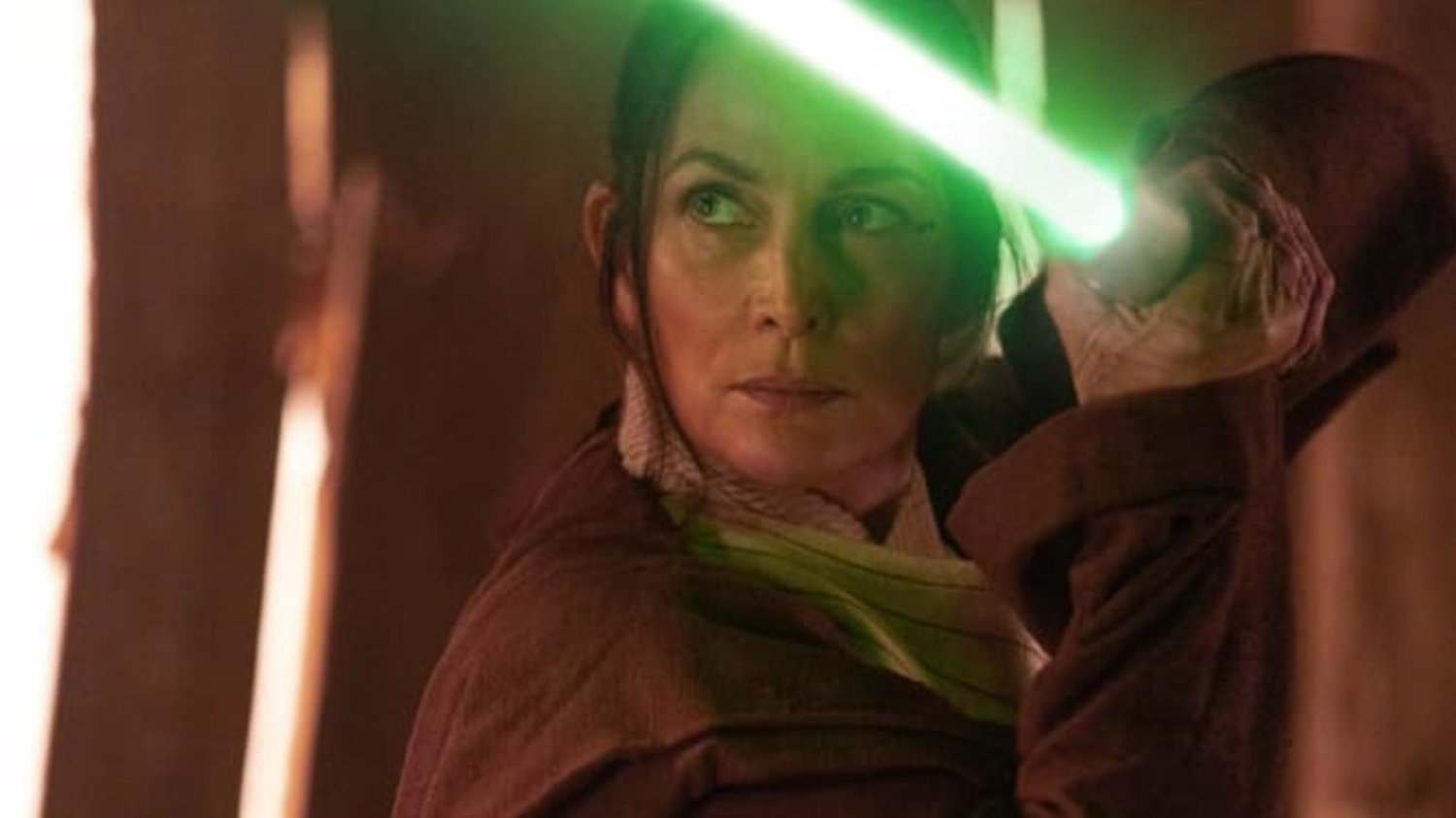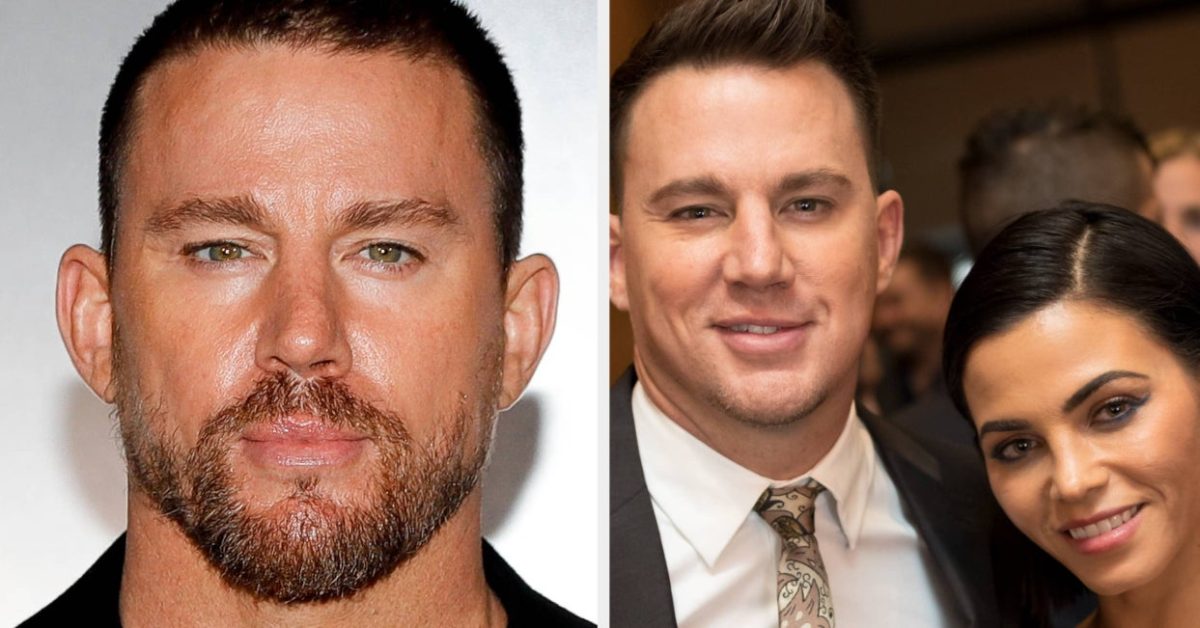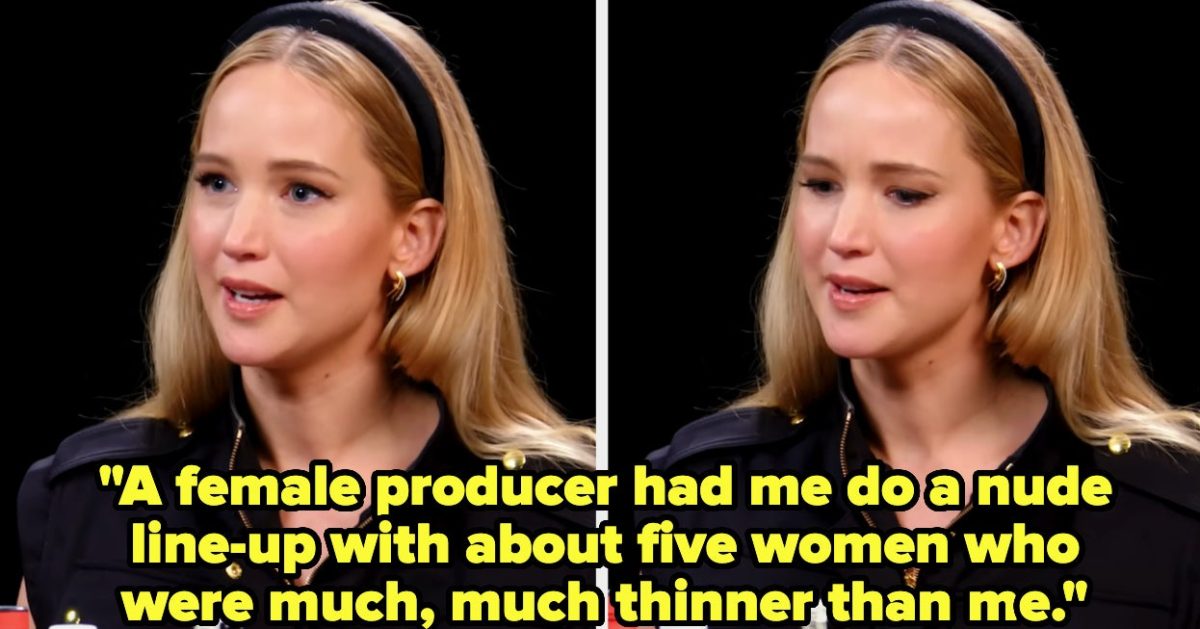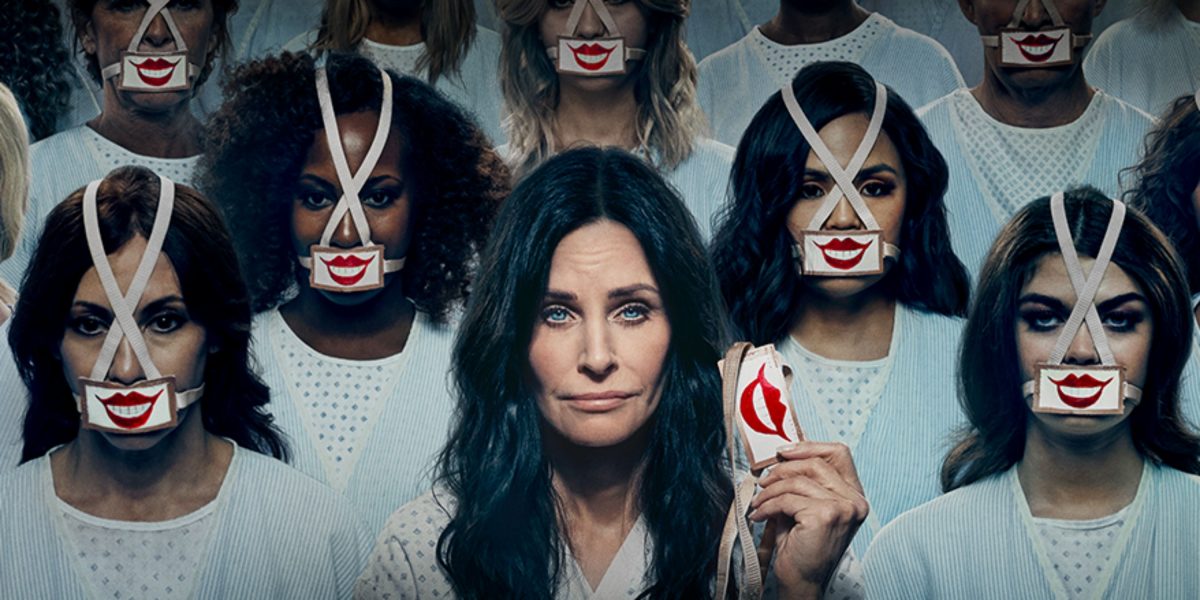
‘Shining Vale’ Showrunner Digs Into the Blood and Gore of Season 2
Dec 1, 2023
The Big Picture
Season 2 of Shining Vale allowed the creators to go bigger and crazier, and they wanted to explore why people wouldn’t move out of a haunted house. The show is very complex, both in terms of story and production, so showrunner Jeff Astrof likes to have everything planned out in detail. The creators intentionally try to subvert audience expectations and balance between scares and laughs, aiming to surprise and keep viewers on the edge of their seats.
[Editor’s note: The following contains spoilers for Season 2 of Shining Vale.]From co-creators Jeff Astrof and Sharon Horgan, Season 2 of the Starz original series Shining Vale has followed the Phelps family to the edge of the cliff, as they fight figurative and possibly literal demons. After returning home from treatment at the Women’s Division of the Shining Vale Psychiatric Hospital, having hit her husband Terry (Greg Kinnear) in the head with an axe and leaving him to bleed out on the floor of their house, Pat (Courteney Cox) focuses on being more present with daughter Gaynor (Gus Birney) and son Jake (Dylan Gage). But the holes in Terry’s memory, Gaynor’s resentment for having to step up and take care of the family, Jake’s new friends, and an unstable mother (Judith Light) make Pat wonder if she ever really left the insane asylum or if it just followed her home.
During this 1-on-1 interview with Collider, showrunner/writer/EP Astrof talked about what he wanted to cover in Season 2, addressing why this family wouldn’t just move out of their house after the events of Season 1, already knowing where a possible Season 3 would go, wanting to always subvert expectations, never wanting to use gore just for gore’s sake, that super gross moment with the bus, the trauma of mental illness, designing a creepy goat mascot suit, who he originally thought of for the role of Pat before casting Cox, and the scene that Cox had to overcome her own fear to shoot.
Shining Vale Release Date March 6, 2022 Cast Courteney Cox, Greg Kinnear, Alysia Reiner, Sherilyn Fenn, Judith Light, Mira Sorvino Main Genre Horror Rating TV-MA Seasons 2 Creator Jeff Astrof, Sharon Horgan
Collider: I love this show and I love how unexpected it gets. The first season of a TV series, you’re setting up the world and the characters and you’re establishing the relationships. In Season 2, you can really jump right in and go bigger and crazier and do more. What were you most looking forward to doing with the second season, that you couldn’t have done until you got to the second season?
JEFF ASTROF: That’s a great question. When I pitched the second season, I said, “This is 13 episodes. I could possibly do it in 10.” Starz said, “How about eight?” And I said, “I’ll take it.” With Season 1, I knew where we were gonna go. I knew it was gonna end with Pat being institutionalized. When we were on the set, I was like, “We have to do a Shining stairs thing and hit Terry,” which is a great way to reset the character. Season 2, we knew who these characters are. My first order of business was that the big thing would be, why don’t people move out of the haunted house? I’ve never done horror before, but all my horror writers told me that horror series are usually anthologies, like American Horror Story has shown for the past 28 seasons, because no one is gonna live in that house again. So, it was like, “Okay, what happens if Terry doesn’t remember?” Once I had that, I knew what Season 2 would be.
Because I like moving very quickly, my shows have a lot of scenes in them and have a lot of movement. I knew that we were gonna do a lot and I knew that I wanted to get to Pat being pregnant and Rosemary’s Baby, but that was the second half. So, we actually had to limit the amount of stuff that we were gonna do, just because there’s only eight episodes. When you think of where Terry goes, from the beginning and not knowing his name to where he goes at the end, and Pat and where she goes, now that we knew the characters, we wanted to see how crazy we could get while reshuffling the deck. And also, we wanted to add to the other characters.
There were things I learned in the first season, like Mira [Sorvino] is a method actress, and she would flit around the stage as Rosemary, even when it wasn’t her call day. And then, I saw her dance and was like, “Oh, I’ll give you a dance.” And I saw Gus [Birney] sing, so I gave Gus a song. It was really also knowing what my characters could do. I knew Mira, Greg [Kinnear] and Courteney [Cox], and I knew that I had a long way to go before I got to their ceiling. But then, I saw the kids and I was like, “Wow, they have a lot.” And then, with Judith Light and Joan, there’s a lot there. Once I knew the actors I had to work with, then I was like, “Oh, we’re gonna blow it out. There’s nothing they can’t do.” I keep telling them that I’m gonna try to get to their ceiling yet, but I haven’t come close.
Image via Starz
How Far Ahead Have They Thought About the Plan For the Series?
When you go into a season of this show, do you know where you’re starting and where you’re ending, or do you figure out the ending along the way?
ASTROF: This show is very, very complicated. It’s very complicated, story wise, and telling it is very, very complicated, in terms of production and post-production. We’re on a tight schedule. By the middle of the season, I’m doing post and I’m prepping for the next episode and I’m also writing, and it’s just too much. I like to have everything lined up. All of it is outlined. By the way, all of Season 3 is outlined, and we don’t have a pick-up yet. I know where we’re gonna go. I write it like it’s a four-hour movie. There’s an act break after the fourth episode, and then there’s the second part, which takes off. So, I know where it’s gonna go. I knew Pat was gonna hit Terry and be institutionalized, but it wasn’t until episode five or six that I knew he was gonna lose his memory and we were gonna do Regarding Henry. So, I know where it’s gonna go. I knew where Season 2 would end. I also know where Season 3 ends. You have to do it, to write a show that’s this dense. With my actors, all the notes I get are, “What happens next?” Greg is always like, “How are we gonna do this again? Where does my character go?” I kind of don’t want to tell him, and I kind of don’t wanna tell them, because I want them to be in the moment. I also think people get addicted to it, even on stage and even at this level, so they wanna know. I just like being prepared.
Some showrunners think season by season, some think quite far ahead, and some don’t at all. I talk to some showrunners that know exactly what their eventual end point will be. Do you know where Pat and this family will eventually end up, if you get to go to that point?
ASTROF: Yeah, I do. To be honest, I didn’t figure it out until I was at Comic-Con [this year]. The thing that we did, which is cool, is that every season is patterned after a movie or movies, so I have that that I can do. You can only go to a certain point until you have to get out of the house. We also have probably five or six years left with the dog. So, I know what the last season is based on, but I don’t know exactly how to get there. I never know how I’m gonna do the next season, but I know what it’s gonna be about. Spoiler, but for Breaking Bad, Vince Gilligan knew they would shoot the gun in the trunk of the car, so he knew he had to write to that. So, if they could make that big a leap and write to a prop, then I can write to an idea.
Image via Starz
How They Approached Paying Homage to Rosemary’s Baby
People came to this show not knowing what to expect, but going into Season 2, you have an audience that thinks they know now. Do you think about intentionally subverting expectations? Do you want to make sure to keep things unexpected?
ASTROF: One hundred percent. I’d never done horror before, or even thriller. I’d been a strict comedy guy. And one of the things I learned from my horror writers was that with horror, you should aim it at your most sophisticated audience, and whatever they think is gonna happen, you have to fool them. Whereas comedy, typically, and certainly with multi-cam, you go for the low-hanging fruit. On show night, you have this amazing joke that you’ve been setting up for three episodes, and that gets replaced with a dick joke on because the audience laughs and who doesn’t want to laugh? But with horror, you have to turn a little bit further from what they expect. When we talked about Rosemary’s Baby for the second season, people were like, “Oh, Gaynor is gonna be pregnant.” For us to have an ending that we like, we have to be shocked by it ourselves. And I remember when somebody pitched the ending to Season 2, we were like, “Oh, yeah, that’s awesome. We didn’t see that coming. And if we don’t see it coming, then they won’t see it coming.” It’s the same thing with Season 3. I woke up in the middle of the night and was like, “Oh, my God, this is what it’s been about the whole time. We were doing that.” And then, I pitched it to the writers and they were like, “Oh, my God.” We have to get chills in the room. We figure that, if we don’t see it coming, then you’re not gonna see it coming.
One of the most fun things about this show is that you don’t know whether to expect a laugh or a scare around every and any corner. Do you try to balance that out, or is it more important to lean into whatever feels most natural, even if it leans more toward one or the other, in any given episode?
ASTROF: Christina Davis (the former President of Original Programming), who was at Starz when she saw the pilot, said that we balance on the head of a needle, and that’s what we’re trying to do. When she first came to me with the idea, Sharon [Horgan] said, “Do you think we could do a horror comedy that’s scary and funny? It’s very rare. Usually you have something that’s funny, but it’s not scary, or it’s scary but not funny, or it’s campy.” I saw Hereditary and I was like, “Imagine you shot Hereditary, but you shot it like a comedy. That would be amazing because you wouldn’t know whether to laugh or to be scared.” I want people to be on the edge of their seat and lean in, and then it’s either a scare or a joke. The thing that interested me, aside from working with Sharon and the genre-bending of it, was the notion that it opens your tool kit up to a whole different way to surprise people. I’m a joke writer and I love great jokes, but when someone says, “That really scared me,” I get more pride out of that because it’s not something I do. You can’t just do a pure horror episode. My instinct is always to go for the joke.
Image via Starz
What Is Their Gauge For Blood and Gore?
What is your gauge for how bloody and gross things can get? Is that just a gut feeling? Is it easy to sense when you’re going too far?
ASTROF: I hadn’t done horror before, and when I turned the first draft in to Sharon, every scene had blood splattering. She was like, “What are you doing? It’s not scary, if every scene is like that.” I learned that from my horror writers, too. Personally, I don’t like blood. I also never want this to be like Saw. It’s not horror porn. I don’t like that. That makes me feel yucky. The blood is organic to it. I try to make it deeper, and not just gore. I don’t love gore. Every now and again, it’s good to have blood, just because people expect blood. If you can do it in a funny way and have people react naturally to how you do when you see blood, it’s even better.
And if you hit somebody with a bus, there’s going to be some guts.
ASTROF: If you hit somebody with a bus, more is more. That was incredible. I empower people in every department to just go for it. I know what my wheelhouse is, and I have a small wheelhouse, but I’m really good at that wheelhouse. Everything else, I give to people who are great at their wheelhouse. So, the VFX guy said, “What if we just decimate her?” And I was like, “Yes!” I knew where the jaw was gonna go, but I was like, “Do you see the sign there? Can we put an organ up there on the sign?” There’s so much to watch in that scene. They just obliterated. It’s so shocking. It’s also just so funny because of the reactions of the other characters. And if you look at the sign, there’s actually a kidney that hits it, and then drops down. That was a case where it just came from VFX, and I said, “Show me what you can do,” and they did, and it was incredible. It was so gross. It was also like, “What would happen in real life?” That was hyperbolic, but if you get hit by a bus going 60 miles an hour, there’s not gonna be that much left of you. The thing that actually really disturbed people about this, which I loved, was that Mary Lambert filmed that episode and she showed it from a different angle. Usually, you don’t show the whole thing. They were like, “But you see it coming.” And I was like, “I love that you see it coming because you really think it’s gonna cut away, and when it doesn’t, it’s so shocking.” Sometimes you trick people by showing them the obvious shot. When you see the earlier bus stuff, it’s more of a traditional Final Destination shot. But with this one, it’s just like, “Holy cow!”
Image via Starz
The Trauma of Mental Illness Is Real
When you have a line in the show, “You can’t get rid of mental illness, that shit is like glitter,” is it hard to find the comedy in that, or is it cathartic to find the comedy in something that can be so serious and so traumatic?
ASTROF: I so wish that was my line. That was one of my writers, Albertina Rizzo, and she just said it matter of factly. That line is just so true, in every way. I was like, “Okay, did you have that line?” I worked on Friends and had some lines that, in that era, were memorable and people were like, “Did you come up with that? Did you have that waiting?” But it was whatever my dumb mind came up with, at the time. And this was one of those where I was like, “Tell me the truth, had you used that before?” And she was like, “No, I just thought of it.” We’d been talking about the scene between Pat and Joan, and talking about what Joan would say, and she just said it. It’s just so good. I have kids, and now they’re older, but anytime you see glitter, you know you find that shit years later. It was great. I love that line, and I have to give Albertina full credit for it. As a comedy writer, I was like, “Yes!” Sometimes you do jokey jokes, but that’s a joke that’s just true. It just really resonated. And Judith Light is a joke assassin. She can kill any joke, and the way she just threw it away was perfect.
And then, you decided to throw in somebody running around in a creepy animal suit. What’s it like to get to create a creepy and grotesque furry suit like that? Did you go through a lot of different ideas?
ASTROF: Yeah, we did. You’re asking such great questions. I’m used to doing 22-episode seasons, which would kill me now. So, having eight episodes, and having a year to do eight episodes, I think about everything on this show. My son was playing Five Nights at Freddy’s, which is horrifyingly scary, and I thought that would be fun for Jake since he does that. So, we were like, “Let’s do a creepy goat.” Whenever you hire somebody whose job it is to do creepy things, they will go with the maximum creep. I was like, “We need a creepy goat.” Our special effects guy was like, “On it,” and he would give us these things of Satan goats that are so scary, just from the drawings. I was like, “No, you have to think it’s a mascot. If you see this Satan goat in your house, you’re gonna call the police or you’re gonna move.” We went through a lot of iterations on that. I was like, “I want the body to be like a plushy, but a plushy that someone died or vomited in.” I wanted to do a goat costume where the worst possible things had happened in it, but you could see a poor school using it as a mascot. And then, we could not get the head right.
So, I Googled “creepy goat costume” and it was on Etsy. There was only one of them, so we had to make another. We were filming in two days, but it was in Canada and you couldn’t ship it, so I was gonna send my assistant up to Canada to get it. It wasn’t an easy thing. We had two of them, and then we had our wardrobe and VFX melt the hair and cut it. It had to be very creepy, but not so much that Pat would say, “All right, you’re a grown up that’s gonna do terrible things to me. I can get out of the house.” It had to be where it could be one of Jake’s weird friends, but also like a plushy. It required a lot of thought, a lot of work, and the transit of a lot of moving parts. And then, we had to make it our own because I don’t know what the copyright rules are for Etsy. We bought a regular costume and aged it down for the bottom. The thing about this show is that some stuff can be really scary, if it’s a jump scare, but that had to be creepy. It had to be something where it would bother you and you kind of know why, but you can’t just say it because a kid could take it off and be like, “Yeah, this is the mascot. I go to a terrible school and we’re the Rotting Goats.”
Image via Starz
Will They Ever Get More Definitive About What’s Real?
This is also a show where we don’t really know for sure what’s real or not, what’s mental illness or nervous breakdown, or whether there’s really demonic possession happening. Is that ambiguity part of the fun? Are you going to get more definitive about that stuff?
ASTROF: That is the fun of it. Sharon and I discussed that, in the beginning of it. I always say, I’m fortunate to come from a long line of mental illness. The thing that I loved in Sharon’s pages was that at the end of the pages was the line that I start the show with, which is, “Women are more than twice as likely as men to be depressed and possessed, and the symptoms are exactly the same.” If you do a dive on both of them, it’s shocking, so I thought that was really cool. In Season 1, everything is Pat’s perspective. The challenge with Season 2 was to figure out how to bring Mira back and have her be able to interact with everybody. Everything has to be justifiable. In the end, you should be able to watch it and say, “Oh, okay, that was Pat’s point of view.” The wild card is Jake because Jake can see things, but we do it through technology. What we see from Pat’s point of view and from Gaynor is that that’s all subjective.
You have Pat questioning what’s going on with Rosemary and Ruth while the audience is questioning it, which makes the audience at least feel like it’s okay to question it.
ASTROF: That’s one hundred perfect part of it. In a weird way, I really want people to relate to this show and really invest in the characters. Especially now, it’s escapism. With the blood, I don’t wanna turn people off. I want people to feel like, “The Phelps are a very messed up family, but I have a messed up family too.” Even though I don’t see things, sometimes I hear things. The first barbecue I had with everybody, I said, “Tell me a ghost story,” and we went around and told stories about something that had happened to you, and everybody had one. That’s a relatable thing. But also, people who are mentally ill don’t think they see things, they see things and they know things. How do you tell them that they don’t? And why do you think they don’t?
Image via Starz
Which Actress Was Initially Thought of For the Role of Pat?
You’ve said that you didn’t write this for Courteney Cox, which seems crazy when you watch it because she just seems so perfect for the role, but she saw herself in this role and sold you on her doing it. Once she signed on for this show, did that change anything about Pat?
ASTROF: She only changed two or three lines where she said, “My mouth won’t do that.” She’s a southern girl, and I’m a northeastern guy. She was like, “The character is talking like you. I can’t talk like that.” But that was it. She was all in. And then, once Courteney was cast, only Courteney was Pat. I don’t know who else Pat would be. When I first wrote it, people assumed it was for Sharon and everybody pictured Pat having this Irish accent, but Sharon never intended on being Pat and I didn’t think she would do it. She told me, “I’m not doing it,” because she had other projects. The big thing that changed was that Pat was written in her early 40s, and having Courteney be a little bit older than that with teenage kids made it better. The only thing that changed was that the original Pat got pregnant when she was 17, and her mother got pregnant when she was 17, and Gaynor then has a potential pregnancy when she’s 17. I liked that pathology, but I gave that up easily. When you get Courteney Cox to do the role, she’s just such a genius. Pat is also not her, at all. When I talk to the actors, because I’m very, very simple, I just refer to them as their characters, so when you’re there onstage and you’re in that house, you feel like everybody is their character. Courteney only made it better, and the choices were better. The only thing we lost was the generational young parent, but you’ve seen that before.
Her performance is so remarkable because there are not a lot of actresses that could go between drama and comedy, and madness, and often not being a very nice person, and she just does all of it, seemingly effortlessly.
ASTROF: I think it’s zero people. The reason I didn’t go with Courteney right away wasn’t even that she couldn’t have been a younger mom. It was just that I thought, “Okay, she did Scream. She’s done this. Why would she wanna do this? Is she really gonna do this?” I also hadn’t seen her a lot of her drama stuff. My original thought was, “I’m gonna ask my friend Julia Louis-Dreyfus,” who was just finishing up Veep and was like, “No, I’m done.” I just knew that Julia can do anything. I’ve said this before, but I just did not know the range that Courteney had. You’re right, on paper, this character is not a very likable character. She’s a terrible mom. Her kids are telling her they don’t like her. And by the way, she’s very honest about it. She’s broken, and Courteney plays that. I don’t know what she taps into to do that. We’ve talked about it a little bit. I know there are certain scenes we’ve done where we need to take a break because we touch a nerve with everybody. She’s just incredible.
How the Actors Sometimes Have to Face Their Own Fears to Shoot A Scene
I’m sure it’s fun too to get to do some of the insanity. Getting to do all of these things in one show is a rare thing, so I would imagine, even when it gets hard or if it gets insane, it’s still fun to have that opportunity to do all of it.
ASTROF: Oh, my God, it’s very, very fun. Everybody loves it. Courteney is in 40 scenes an episode and she’ll be like, “It’s just a lot. Can we maybe not do such long days?” And I’m like, “I could cut you out of scenes. What do you want to lose?” And she’s like, “Nothing.” That keeps happening, but the problem is that I wanna see her do everything. The only thing that Courteney doesn’t love doing, which I get, are the days where she’s just reacting and screaming, and she’s in heavy makeup, going from room to room screaming, because that’s just how the schedule works out. I get that. It’s a bummer to drive an hour and a half to scream all day. She was sick one day, when we did the thing in the bathtub, and it was a cold bathtub. She was surrounded by people, she had too much going on to deal with all that, but she did it, take after take. She was the one who drove it with, “All right, one more. Let’s do one more.” I was finally like, “Courteney, get home right now. I’m gonna get a helicopter to get you home.” She was shivering.
Does it ever fall into that area of the actors also having to face their own fears and phobias with some of what they have to do?
ASTROF: Oh, yeah. We did a thing that Courteney documented. She’s afraid of heights and we had to have her on the edge of the house. She was like, “Is that 70 feet high?” It turns out it was 16 feet high, but if you’re afraid of heights, it seems like it’s 70 feet high. She said she couldn’t do it because of her fear of heights. She was so apologetic. She was like, “Let me do it.” I said, “No, this is my fault. We could just do this whole thing with green screen.” And she was like, “No, I really wanna try to do it.” One of the reasons I have women directors is because I never wanna be the person to tell a woman to do something that makes her uncomfortable. We have physical stuff. I don’t have a lot of nudity in this show because I’m very uncomfortable with it, and these people are married or have partners, but there’s a lot of stuff where I want them to find the real fear in it. When she’s downstairs and hears that voice when Jake comes out of the wall and there’s that entity there, everybody screamed on set. It scared the shit out of everyone, and that’s really fun.
Shining Vale airs on Friday nights on Starz.
Watch at Starz online.
Publisher: Source link
Channing Tatum Not Happy About Jenna Dewan Legal Battle
Channing Tatum Not Happy About Jenna Dewan Legal Battle Back in 2019, Channing and Jenna were declared legally single after separating the previous year. They were married for a decade and share one child, Everly, who was born in 2013.…
May 3, 2024
How RHONJ’s Melissa Feels About Keeping Distance From Teresa
Though the new season hasn't even debuted, Melissa indicated she's already excited about the reunion. "There's so much that needs to come out, and that's the place to do it," she said. "I mean, there's so many rumors and things…
May 3, 2024
15 Nightmare Audition Experiences Actors Shared
She said that, at a film festival several years down the road, a drunk producer told her, "Oh, Thandie, I've seen you recently!" She said, "And he lurched away, looking really shocked that he'd said that."Her husband, Ol Parker, spoke to…
May 2, 2024
Richard Simmons Defends Melissa McCarthy After Ozempic Comments
Ozempic is no laughing matter for the comedian. Handler revealed her "anti-aging doctor" prescribed her the medication without realizing what the drug was. "I didn't even know I was on it," she said during the Jan. 25, 2023 episode of Call…
May 2, 2024
